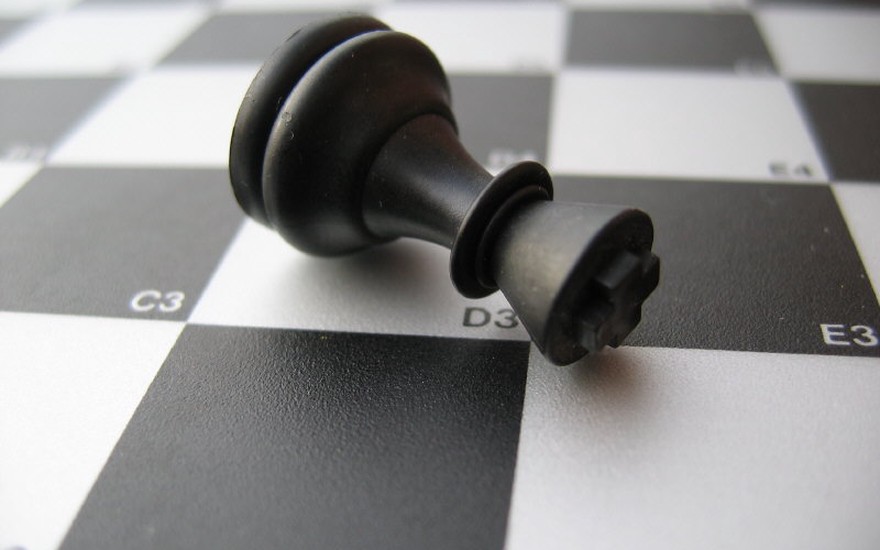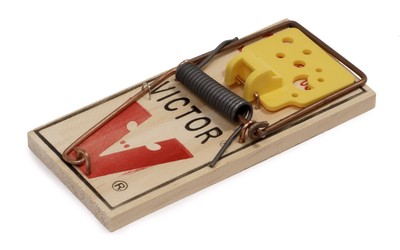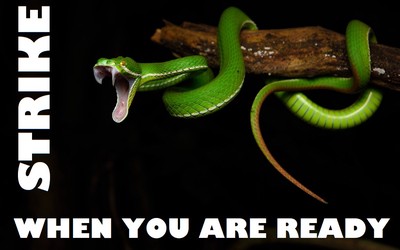
https://www.freeimages.com/photo/schach-chess-3-1427021
Learn from Defeats - Part 1 (Lichess Rating below 1300)
This blog is an experiment. I pick a sample of randomly chosen defeats of a player who voiced interest in improving his game. I will then try to give hints and tips with the main focus on understanding positions and finding ideas.Learn from Defeats - Part 1 (Lichess Rating below 1300)
Introduction
Beginner, experienced club player or GM; we all make mistakes in our games and the way to get better is to learn from our defeats.
Today I will look at 5 randomly chosen recent losses of a player who voiced the wish to improve his level of play.
I have chosen to protect his anonymity and that of his opponents to some degree, by calling him "Player A" and his different opponents will all be designated as "NN".
I am not doing this, because there is anything to be ashamed of for anybody involved. There isn't.
Still there are always some players who have a tendency to make fun of, or belittle those they consider inferior to their own strength. Bullies. If you happen to be one of those guys, go, take a look at your own games and you might find some blunders to laugh about there too!
For that matter, feel free to take a look at my games too, if you will. You will find all sorts of blunders. I am not ashamed of them. I am a human, I play without illegal assistance of any kind and so it is only natural that I make mistakes.
If you feel you are so much superior, then good for you! In that case you don't need be reading my blog - go write one yourself so that we may all learn from your greatness!
If you're not Magnus Carlsen there will always be somebody better than you.
/Rant over.
This blog is written mostly for "Player A" and is meant to sort of replicate game analysis as we might do it OTB at the local chessclub. Of course everybody who would like to read on is most welcome!
The Games & Some Hints for Improvement
Now let's take a look at the games I have randomly selected:
Game 1:
Player A played the white side of a French Defense and chose to go with the Advance Variation. This is a perfectly reasonable opening. Do you know the plans and ideas of the French Defense?
We will not go into any opening theory or concrete variations here. Just some general pointers.
White gets space advantage in the center and Black's LSB (light-squared bishop) on c8 gets locked in behind his chain of pawns. Making it passive until Black can find a plan to bring it into the game.
Black will usually try to play a pawn break with c7-c5 soon, sometimes also f7-f6, to undermine the white center.
The white pawn on d4 can often become a liability and it often is the main focus of the opening in these positions. So when you decide where to put you pieces, keep that in mind.
About 5.Bf4... Whenever you develop your queenside bishop, be aware you are weakening you b2/b7 pawn. It is not necessarily a problem, just something to keep in mind, especially if the opponent's queen can access b6 (or with colors reversed b3 respectively).
Another point about 5.Bf4: You usually want to castle quickly, and the bishop on f1 is still in the way. So Bd3 might have made a lot of sense. c5-c4 is no worry, as long as your bishop can safely retreat (to e2 in this case). In fact, if Black plays c5-c4 your should be happy, as it takes pressure off d4.
It is my impression, that you were somewhat unfamiliar with the plans and themes of the French Defense. This is not so much a matter of studying concrete variations and lines. It has more to do with pawn structures. You can get away with knowing virtually no opening theory, but you have to understand pawn structures. At least the very basics of the ones relevant to your opening repertoire.
If you, Player A, were my student, your homework would be to read this Wikipedia article on Pawn Structures and think about which of them are most likely to occur in your own games.
https://en.wikipedia.org/wiki/Pawn_structure
Relevant for this game: https://en.wikipedia.org/wiki/Pawn_structure#e5_chain
Game 2:
4...g5?? is truly awful for Black. Don't let such moves bluff you. Even if you can not possible calculate all variations in depth, there is no reason not to take the e5-pawn. There does not seem to be any promising sort of counterplay for him.
5.h3?! is still good for White, but lets a lot of the advantage slip away.
This is probably mostly a matter of experience. You will reach a point when you just see that your opponent is only bluffing, that he has nothing when he plays moves like this that are not justified by the position.
Tip: Play with confidence! If you don't see any way for your opponent to punish you and you can grab a center pawn for free, do it! If you missed a tactic, so be it, let your opponent show it to you! Maybe you will lose, but in that case you learned something from it at least.
5...Qf6 is a typical example of a premature attack when not enough pieces are developed yet. Please read my upcoming blog post "Opening Tactics - Part 6: Strike When You Are Ready" for more on this topic. I am working on it and should have it posted in two or three days from now.
6...h5 Hyper-aggressive play by Black here. This is the sort of moves, where you know it isn't good; you should have advantage, but if you don't defend well, you will still get crushed. It is best to fight for the initiative if you can.
Black is not castled, his king is still in the center. He is underdeveloped and focusing only on his somewhat crude attack. So it would be a good plan to open the center and exploit his weaknesses.
Losses like this are often particularly frustrating, because they feel so unnecessary.
With these hyper-aggressive attackers it is best to take your time, if the situation on the clock allows it, and figure out their weaknesses. Often they neglect the safety of their king.
Fight for initiative and counterattack when you can. Don't be bullied into passivity. Otherwise try to trade off their few developed pieces to take the sting out of the attack.
Do not castle into an oncoming attack, if you don't have to. If you see a battering ram like the g-pawn here coming, and you don't have to castle that way for some reason, why give him a good target?
If you can calculate it with some confidence, play the objectively best move, that will give you maximum advantage. If you find a safe move that looks risk-free, that still gives you decent advantage and is much easier to calculate, it may be a good pragmatical choice though.
12.Qd2?? seems rather pointless. It lets the opponent off the hook and now the coordination of the white pieces is no longer good. The position begins to fall apart like a house of cards. It is somewhat unfortunate, that such a big advantage turns to a losing position just because of one passive move. But that's just the way it is in chess.
If you have got enough time on the clock in positions such as this, calculate until you find a move you are really satisfied with.
15.Bf6?? misses a checkmate in 1. This is something I notice in my own games a lot too - our opponents make an unexpected mistake. They may hang a queen or allow a mate in 1, and we don't look for it, because we don't expect them to blunder like that. So we too miss it and they get away with impunity.
Okay, so in this game you played some very good moves, but at other times you were not forceful and precise enough.
Again, if I were your chess coach, I would give you a little homework. Do at least 5 chess puzzles a day and don't play them for speed, but take your time to really calculate variations. If you fail a puzzle, don't just move on to the next one, but analyze it till you are confident you understand what is going on on the board.
Game 3:
4...f6 is not really a mistake, when you ask the engine, but personally I don't like that move here at all. It takes away the f6 square from Black's knight and it weakens the light squares along the h5-e8 diagonal for no good reason. Better is to either exchange the knight on e5 or get on with your own development.
9...Ng6? is a forgivable miscalculation. Things like that happen to the best of us. You really just stopped calculating a bit too early. With more experience this will happen less frequently, but this is the type of mistake that you will never be really immune against, I think.
Tip: Only because your opponent violates basic opening principles, it is not a good idea to do so yourself.
I feel that 4...f6 was an attempt to punish your opponent for moving his knight twice in the opening. The best punishment usually is to continue normally with your own development unless there is some very concrete tactic, of course.
Game 4:
20.Kxf2?? Again you failed to see the checkmate in 1. This time it was not a very complicated position and you really should have been able to see it. I am sure you know this basic checkmate pattern with knight and queen. What I believe happened here is, you fell victim to a Pavlovian conditioning of sorts. Your opponent captured a pawn and you could take the offending knight, so you did, without even thinking much about it.
Tip: If you see a good move look for a better one.
22.Qe3? missed another chance at winning advantage. Were you in time trouble perhaps? If so, you might consider playing slower time controls for a while. At least until you have gathered more experience and have improved your tactical vision.
Homework: If you can find the time and motivation, try to play a minimum of two games at classical time control with at least 30 minutes per player, preferable longer, per week and really use your time.
Also you need to internalize your checkmating patterns a bit more firmly so that these really scream at you the moment they occur in your games. Maybe you should do more puzzles on this special topic for a while.
Game 5:
5.Ng5 would have given winning advantage already. This too is a move you should see almost instantly. Don't get me wrong, you haven't been playing chess for a very long time yet and it is only natural that you do not yet have the pattern recognition of a more experienced player. Nobody could ask this of you.
What I am trying to say is, that this is definitely an area you should do some serious work on. Here is a lot of potential for improvement. Chess puzzles will help. You don't need to try an solve them as fast as you can. Take as much time as you need. Your speed will increase automatically as you have more patterns stored.
The way you played this game shows, that you have potential for improvement. You were doing a lot of things right here and really should have won this one.
This really reminds me of a famous chess quote attributed to Bernhard or Israel Albert Horowitz:
"One bad move nullifies forty good ones."
Tip: Really keep up your concentration till the very end.
Additional tip: When you have a very bad position, remember how easy it is for the winning player to blunder away the game. Don't give up too early. Try to make moves that give your opponent the chance to go wrong. Maybe you can occasionally turn a loss into a win yourself the way your opponent did in this game.
Conclusion
This format was an experiment for me, and to be perfectly honest, one I am not very satisfied with myself. I am afraid I didn't do a very good job here and I also didn't enjoy it as much as my previous blog posts.
What I tried to do, was to reproduce the kind of analysis with hints and tips, as might happen at the chess club. But there we would be four or more of us sitting at the board, each contributing ideas and his or her unique approach to the position. It would be interactive. This blog and study analysis is no good substitute for that and my explanations didn't come across as clear and useful as I had hoped they would. Sorry about that!
I hope some of the tips and hints I provided above where helpful to "Player A" and others who wish to learn from these games nonetheless.
Please feel free to check out my other blog posts as well. Thank you!
More blog posts by Sefegiru

Played in Austria - Part 2
Three more games that were played in Austria. I hope you will enjoy them as much as I did!
Played in Austria - Part 1
In this series I will analyze games that were played in Austria. It will be a mixed bag of instructi…
Opening Tactics - Part 1: Good Traps -vs- Bad Traps
This is the first in a new series of blog posts on tactics in the opening. Today I will talk about t…